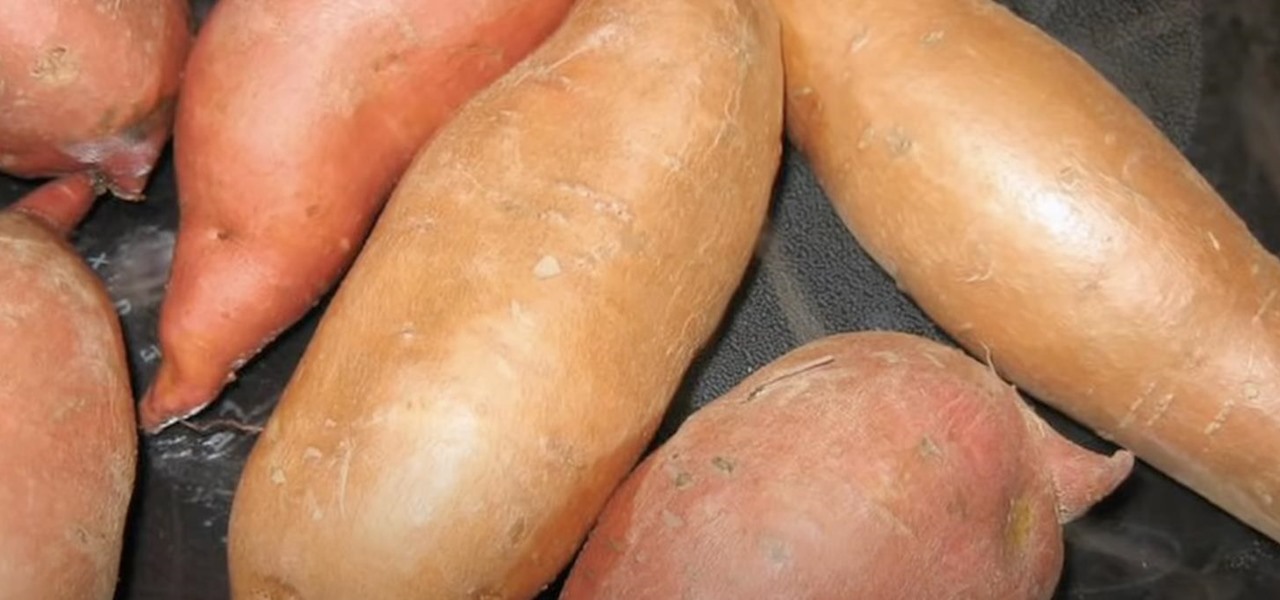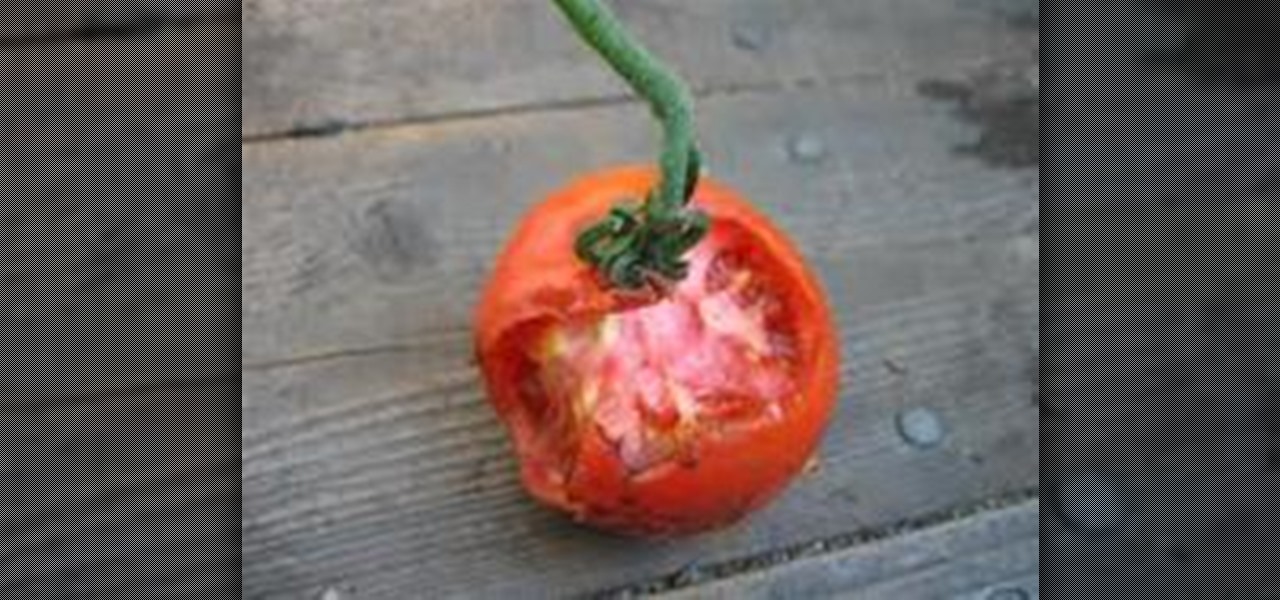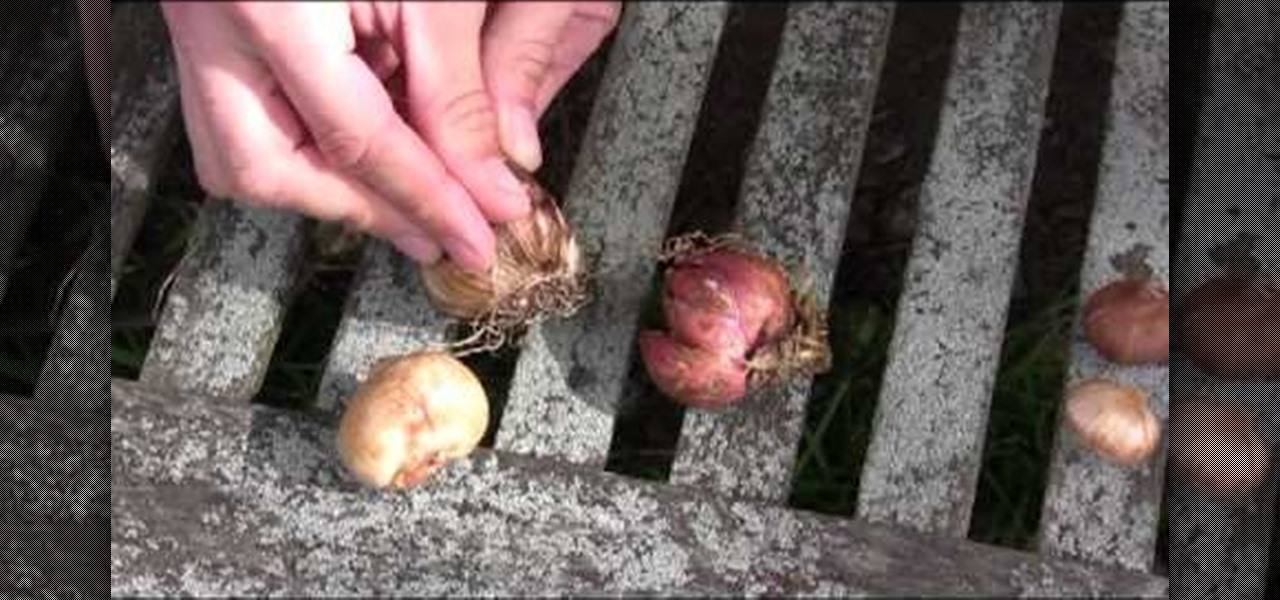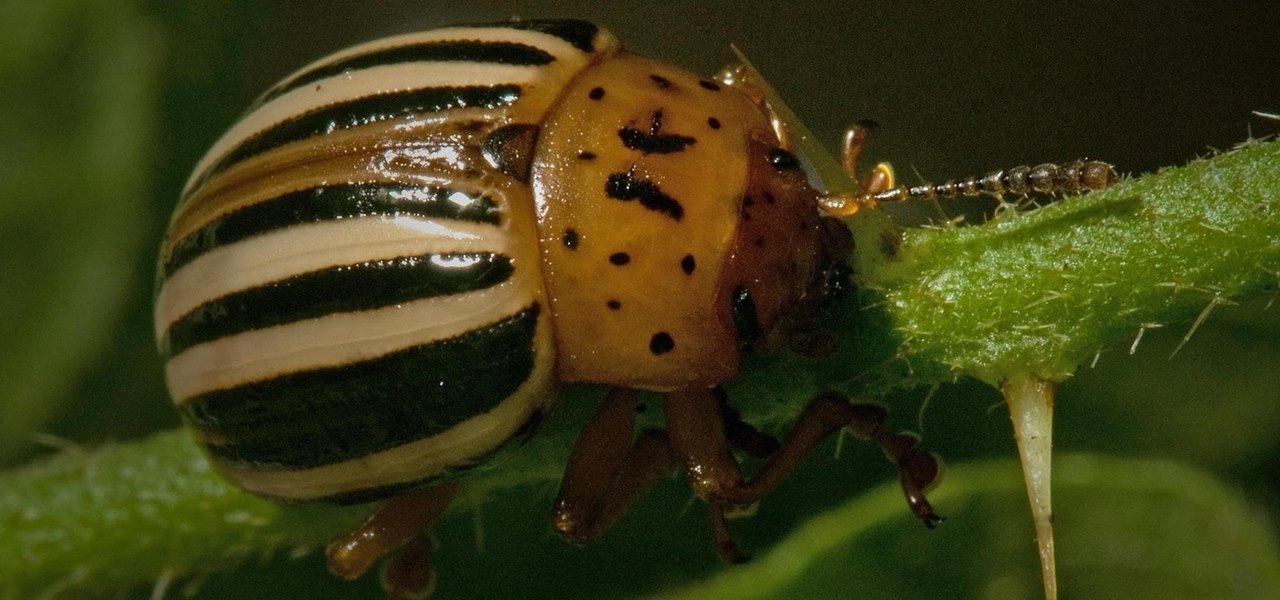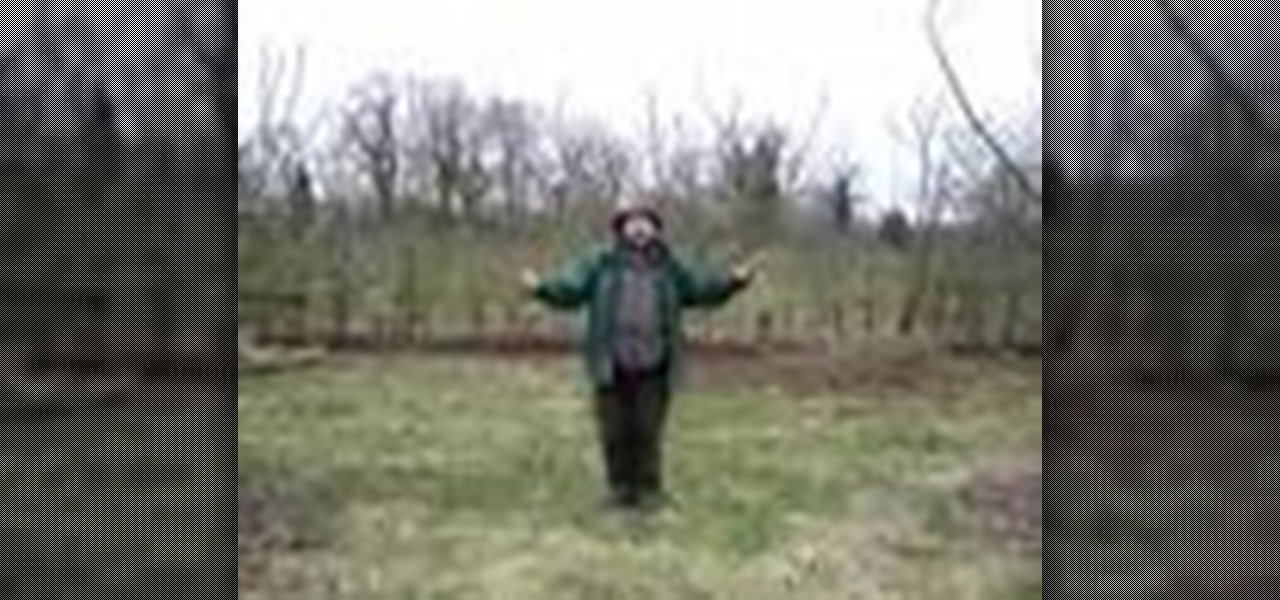Gardening How-Tos

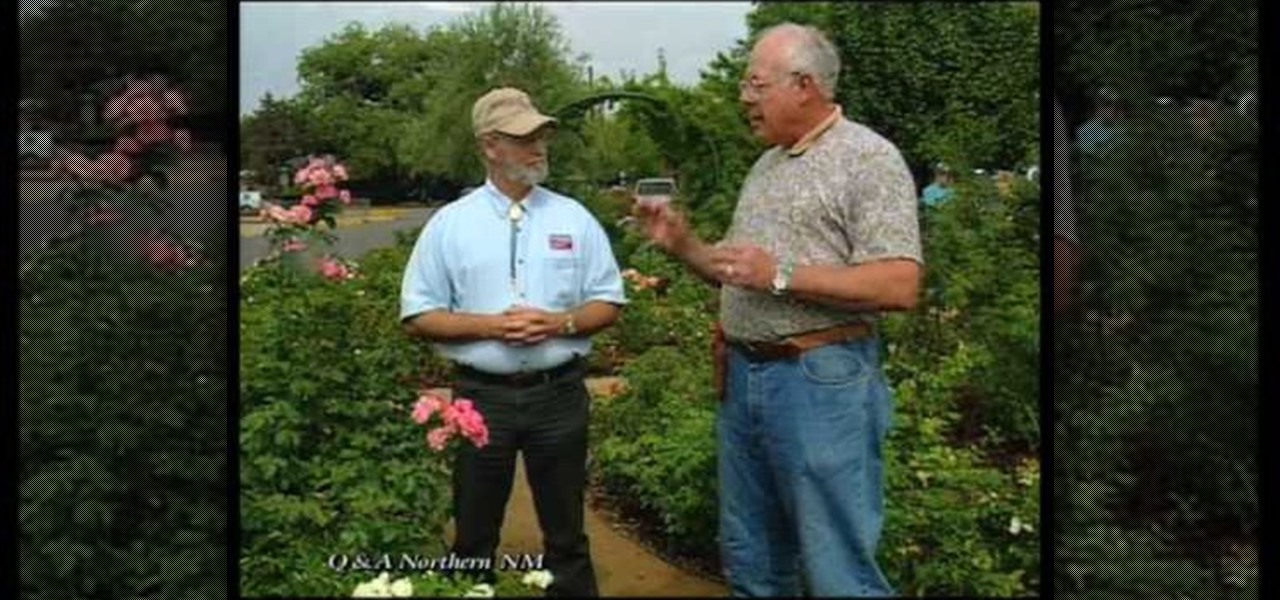
How To: Fertilize & deadhead roses
In this how-to video, you will learn how to fertilize and deadhead roses. Late summer fertilization is okay for these roses. Make sure to water them in well, as this is key. Deadheading in late summer will give you a fall bloom cycle with the roses. Deadheading will mean cutting off dead blooms. Hips are dead blooms that have fertilized. These make seeds and some are either sterile or will actually grow. To properly deadhead, go down to the second or third five-leaf. Cut at a 45 degree angle ...
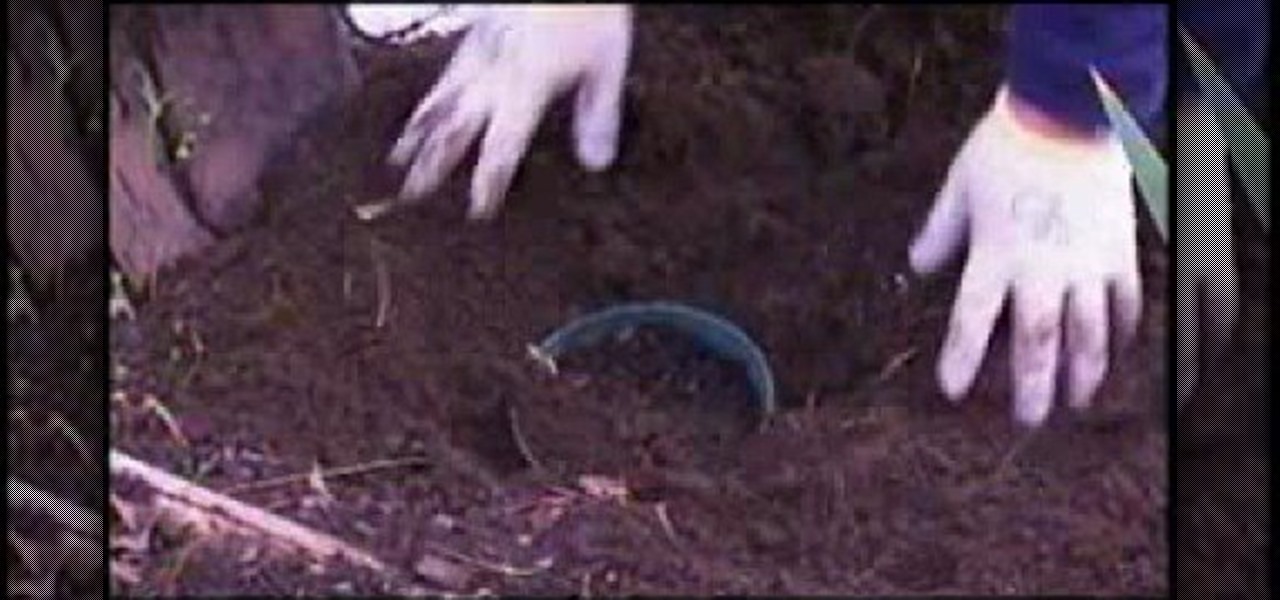
How To: Plant tulip bulbs in a container in winter
Phyllis Stevens gives us some tips on planting Tulips in the winter. We start by taking a container filled with Potting Soil, then we Plant the Tulip Bulbs. You should fit up to 3 bulbs per pot. Putting some Crocus on the top of the soil doesn't hurt. Bury the bulbs in the garden, covering with Leaves and pine-needles. In the Spring (February-March) we will take the pots out from the soil and Sink them down into the Planter Soil. Once they are finished blooming take them out from soil and put...
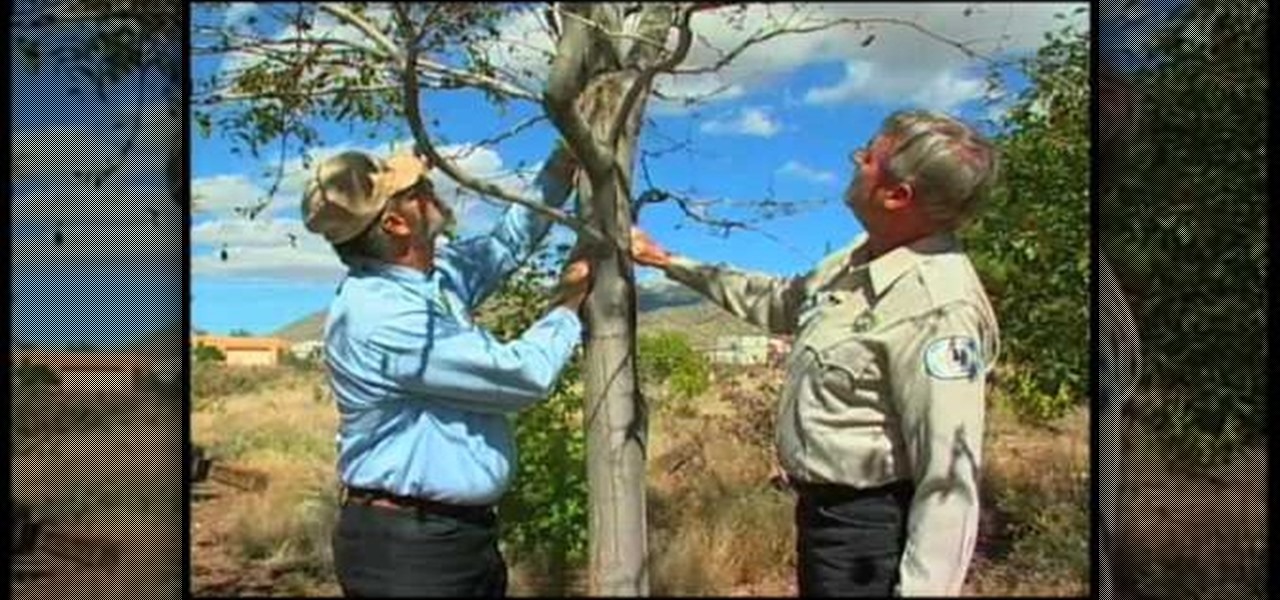
How To: Identify if you are using too mcuh fertilizer
In this video, we learn how to identify common tree problems. If you use too much fertilizer you can find a burn scar that is left on the bark of the tree. You can avoid this by making sure fertilizer spikes are placed away from the tree. Tree splitting is also an obvious sign that a tree is in bad shape and needs to be cut and taken down. A common leaf problem is Pear Slug Damage. A great way to help this to use wood ash on the tree, which will kill the insects that cause this and it's safe ...
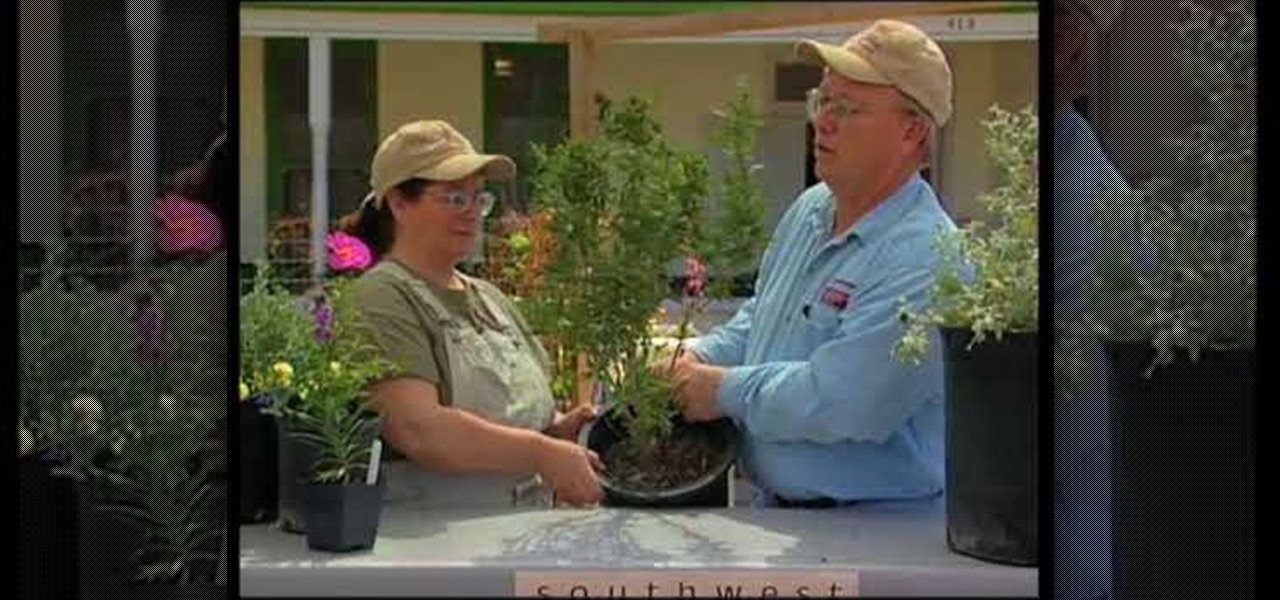
How To: Choose colorful flowers & shrubs for the garden
This video makes suggestions in how to choose colorful flowers and shrubs in your garden. Bowle’s Mauve is a purple flowering plant that will grow and bloom until fall. It will become bushy. Another colorful choice is the Rock Rose, a pinkish flower. The Blue Salvia has blue flowers. A Bank’s Rose, only bloom for a short time. It has yellow or white flowers. Aphids tend to attack it, but it is hearty.

How To: Add color to the garden with perennials
Southwest Yard and Garden featuring John White, Dona Ana County Extension Agent, hosts a 6 minute clip with co-host Master Gardener Valois Pearce both of Dona Ana County, New Mexico host a short web show featuring plants that can easily survive on smaller amounts of water over typical plants. They begin by discussing the full sun Ice Plant, which comes in many species and colors as well as their hardiness, but unfortunately are easy targets for wildlife. They then move onto the Gopher Plant, ...
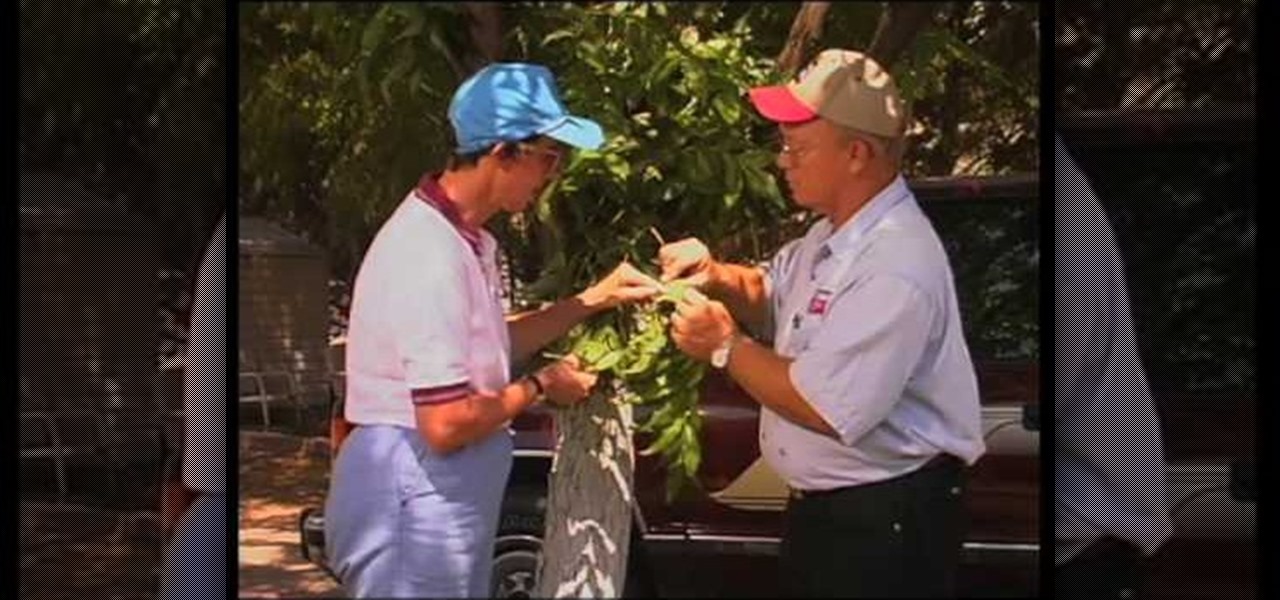
How To: Identify the pecan aphid
We learn how to identify a pecan aphid. There a few different types, some more harmful than others. Looking at the leaves closely we see shiny sticky spots on the leaves. This is called honeydew' which is actually the aphids waste. It is not harmful to the tree. The Black pecan aphids however cause brown discolorations on the leaves. They are necessary to control although mother nature offers a way since there are certain insects who actually eat their eggs. It is wise to first consider this ...

How To: Care for Mexican elder tree
In this video from nmsuaces we learn how to care for the Mexican elder tree. This is a widely used tree but it is not a good windbreak tree. It could have limb breakage. It's native to northern Mexico and southern California and is found in New Mexico. The sprouts on the tree need to be broken off the sides of the tree otherwise they are taking energy away from the rest of the tree. When it goes through its dormancy, you need to keep dead wood out of it. It needs a water source near it but it...
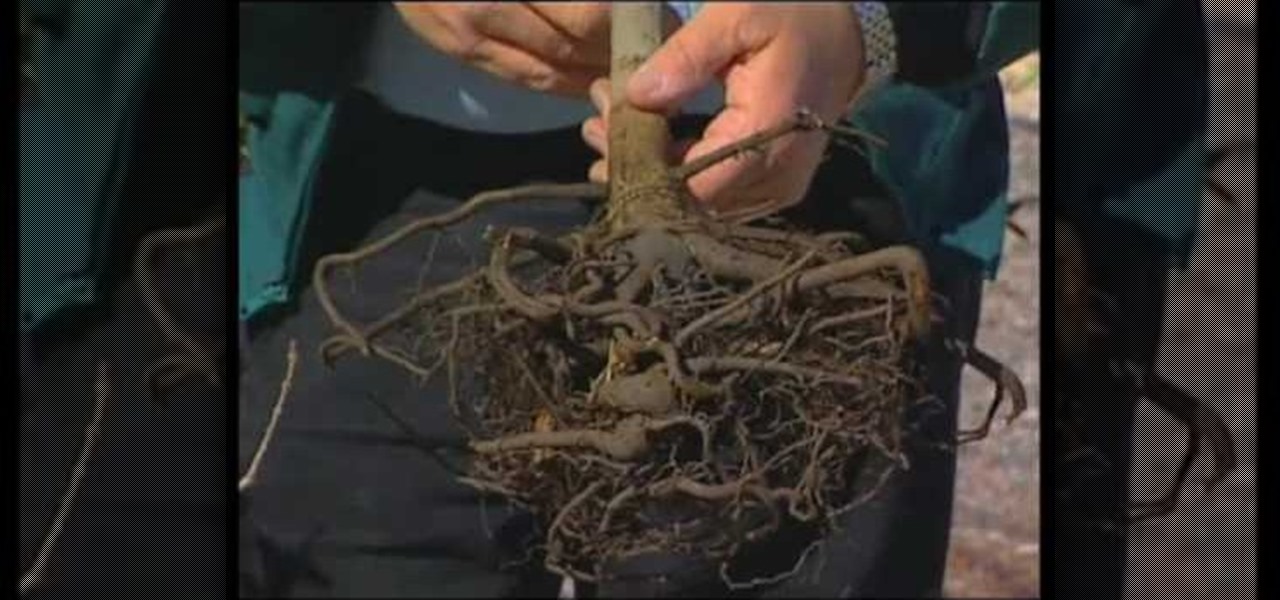
How To: Identify problems with container plant roots
The problems with container plant roots. when purchasing a container plant be sure to check the root system. Wholesale plant sellers tend to leave the plants in small pots for to long. This can lead to problems with the root system. What you have to look for is to make sure the roots are not coming back up and around the base of the plant thereby choking it. When you are replanting be sure to make the hole in the ground 1and 1/2 to 2 times up to 5 times the size of the root ball. This is how ...
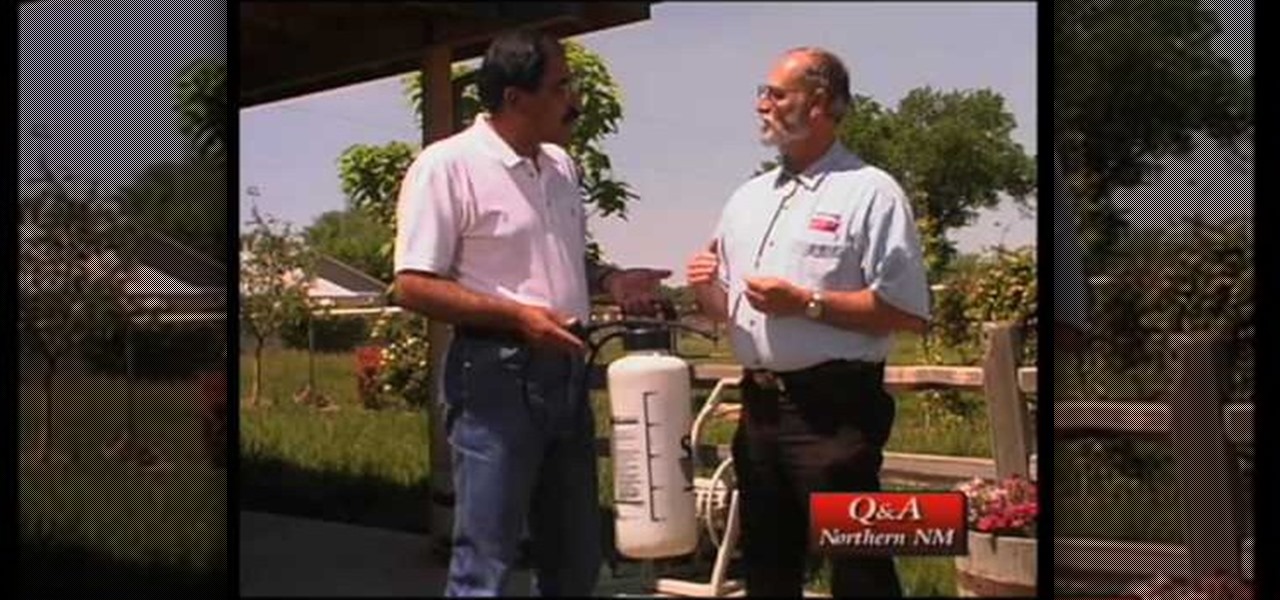
How To: Dispose of leftover lawn chemicals
In this video from nmsuaces we get a lesson in how to dispose of leftover lawn chemicals. Many gardeners want to know what to do with leftover materials and how to get rid of it safely. You should not store it. Once mixed up, use it all. Make your mix so you don't have to have a surplus that day. If you have a surplus, you need to spray it in an area that is labeled to be used. After you are finished rinse the container at least 3 rinses. The rinse water must then be sprayed out in the area w...
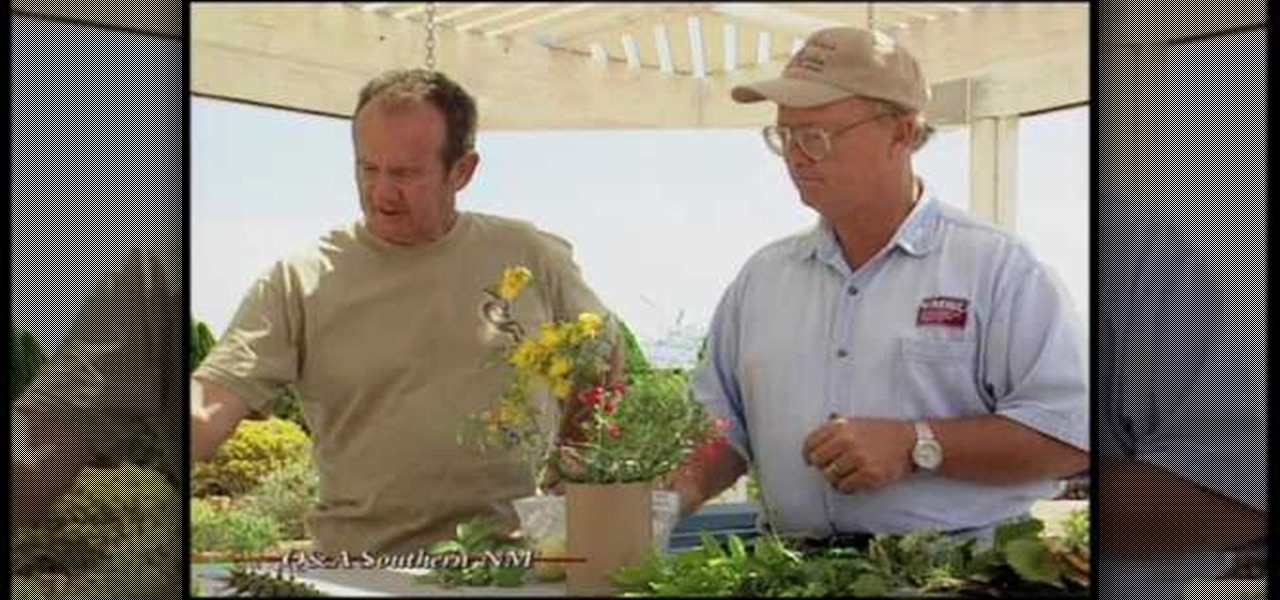
How To: Cure your tomato plant of the dreaded horn worm
How to cure your tomato plant of the dreaded horn worm

How To: Grow sweet potatoes
How to grow sweet potatoes
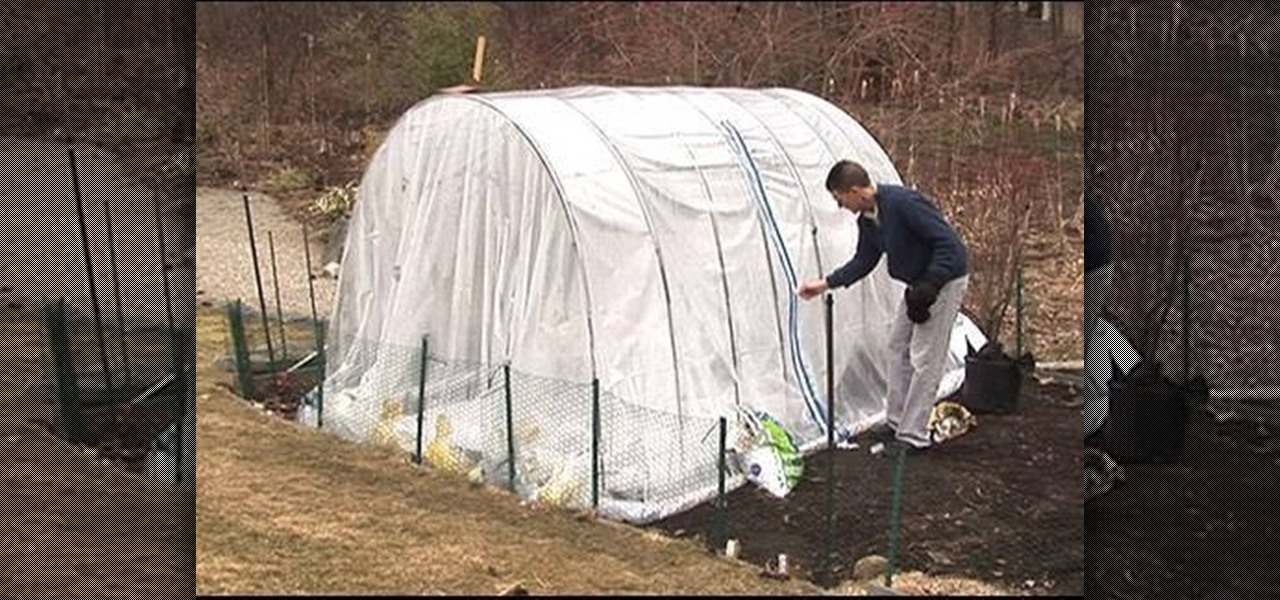
How To: Build a high tunnel to protect your plants
How to build a high tunnel to protect your plants
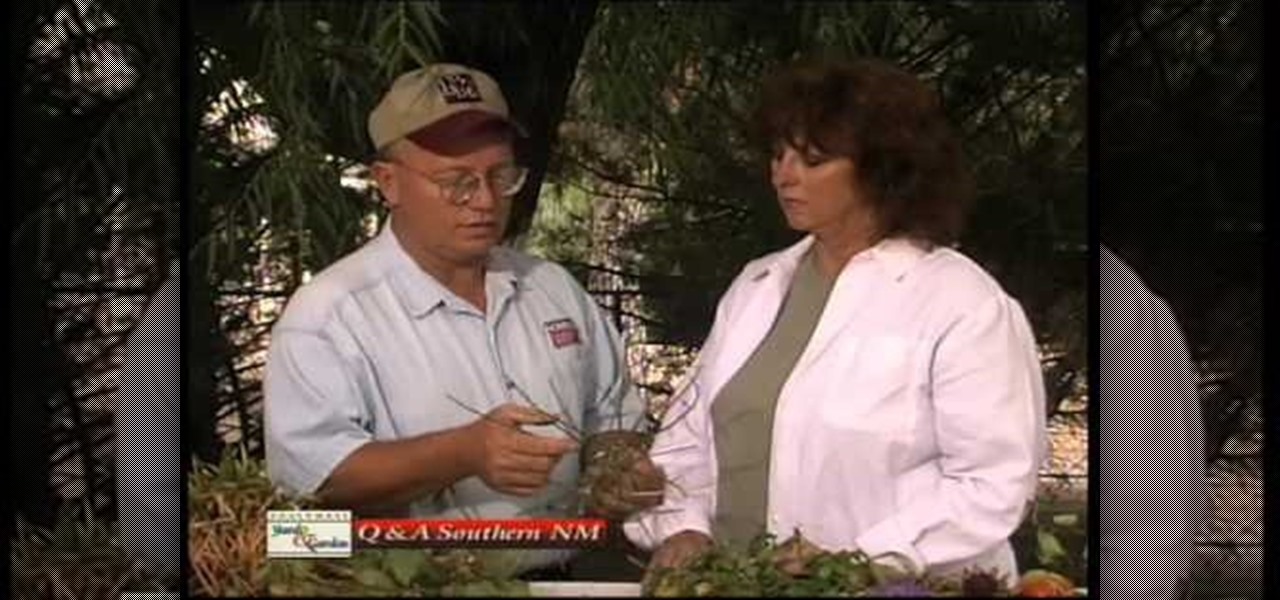
How To: Identify pest on the oleander, rosemary, & ivy plants
In this Home & Garden video tutorial you will learn how to identify pest on the oleander, rosemary, & ivy plants. John White presents this video along with Virginia Owens. Spittle bug on rosemary can be removed with a strong blast of water. You can also add a little bit of soap to it. You also have to be persistent with this. Scale is a kind of insect that forms carnication on Spanish Broom. This can be treated with dormant oil in the summer. Ivy gets burnt when exposed to hot sun. So, you go...
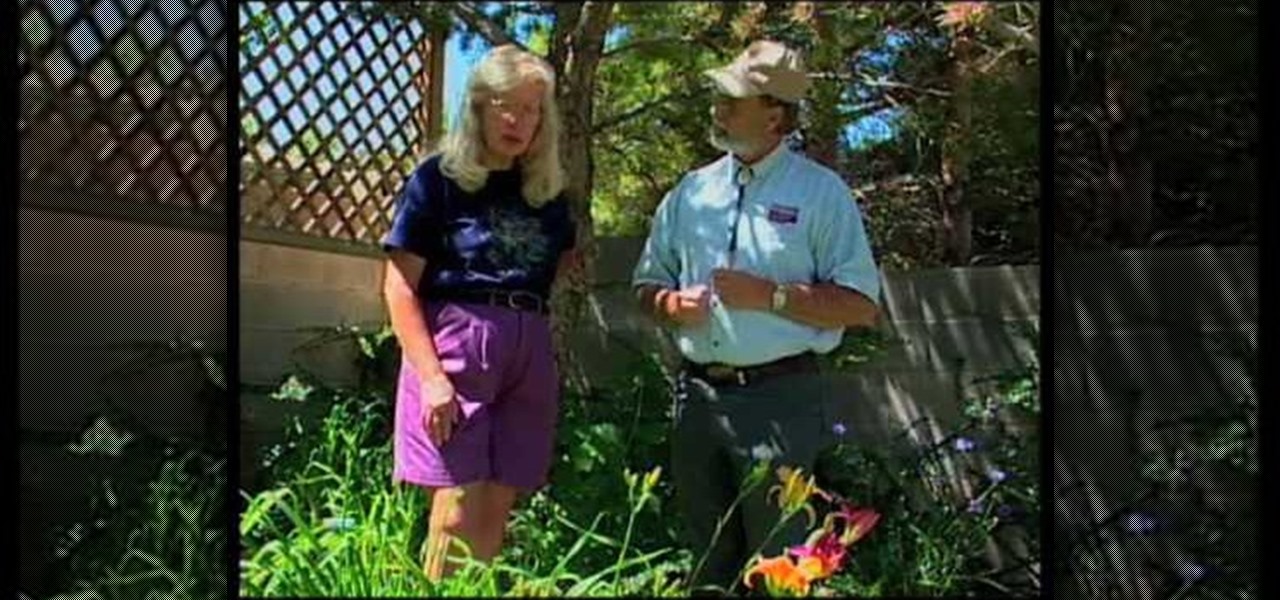
How To: Turn a steep backyard into a terraced garden
First of all you have to start by terracing all the lands. Now select the varieties of trees that you want and start planting them in your garden. These trees shall help you in checking soil erosion. You may also use rocks fro land scalping and also checking soil erosion. Now you can plant ‘daisies’ all around the garden. These grow very fast and then they help to bind all the soil together. However you have to check their growth because they compete with other plants for the nutrients. They ...
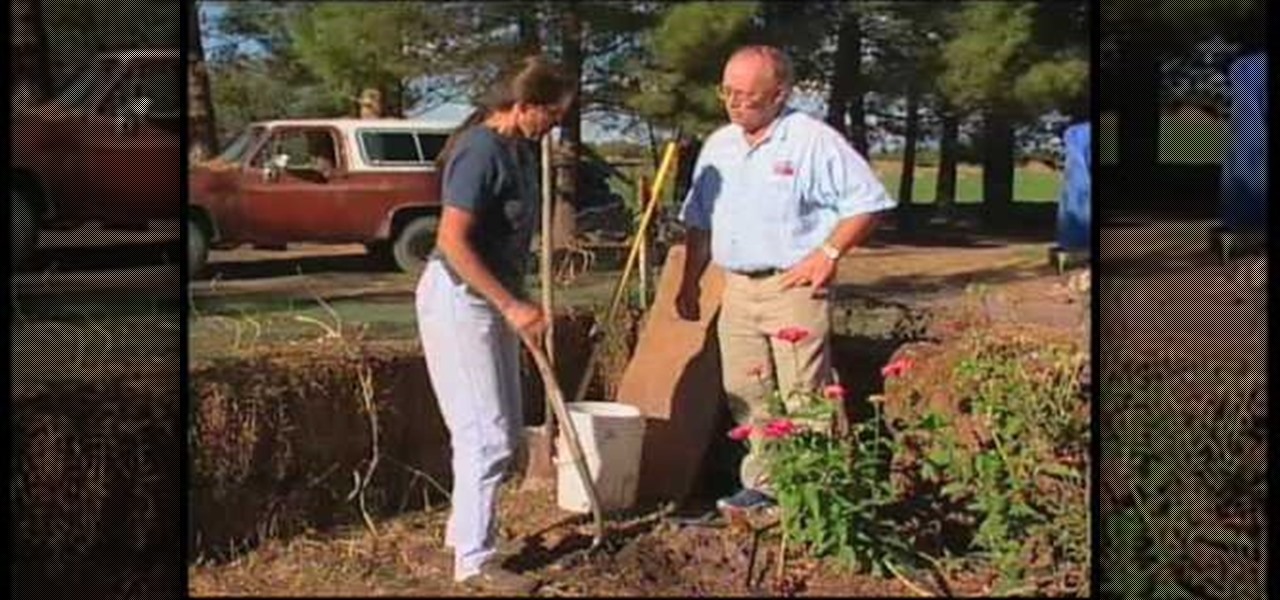
How To: Build a bio-intensive garden
John White of Southwest Yard and Garden along with Kitty Schafer teach you about bio-intensive gardening. Bio-intensive gardening is the combination of two techniques. Part of the technique involves composting top soil with other coarse organic material into a lasagna style mound. Add 2 inches of straw to the soil and spray with water. Add 2 inches of green material that you have collected from other area of your garden, such as bug eaten greens or specific greens for composting. Then add som...

How To: Recycle coffee grounds into compost at home
In this how-to video, you will learn how to recycle your used coffee grounds into compost for your personal garden. Coffee grounds are very good for your soil and can be used for all winter long. If you stick a thermometer in there, you will see that it is about 106 degrees. This means that it is working on the inside. You can also your hand to test the heat inside the compost as well. You should make about a cubic yard of the coffee grounds for the compost to be effective. This video gives y...

How To: Identify willow tree damage caused by a borer
Weeping willows, globe willows, corkscrew willow, cotton wood are all prone to bores than other diseases. They grow in fertile soil with lots of moisture. Never treat tree chemical. Prune as necessary, take out dead diseased limbs, water and fertilize regular. This ensures the tree lasts longer and that the tree is less attractive to insects. Where tomatoes are concerned to avoid sunburn ensure that they are slightly covered with the folding of the plant. High salt level of water or chemicals...
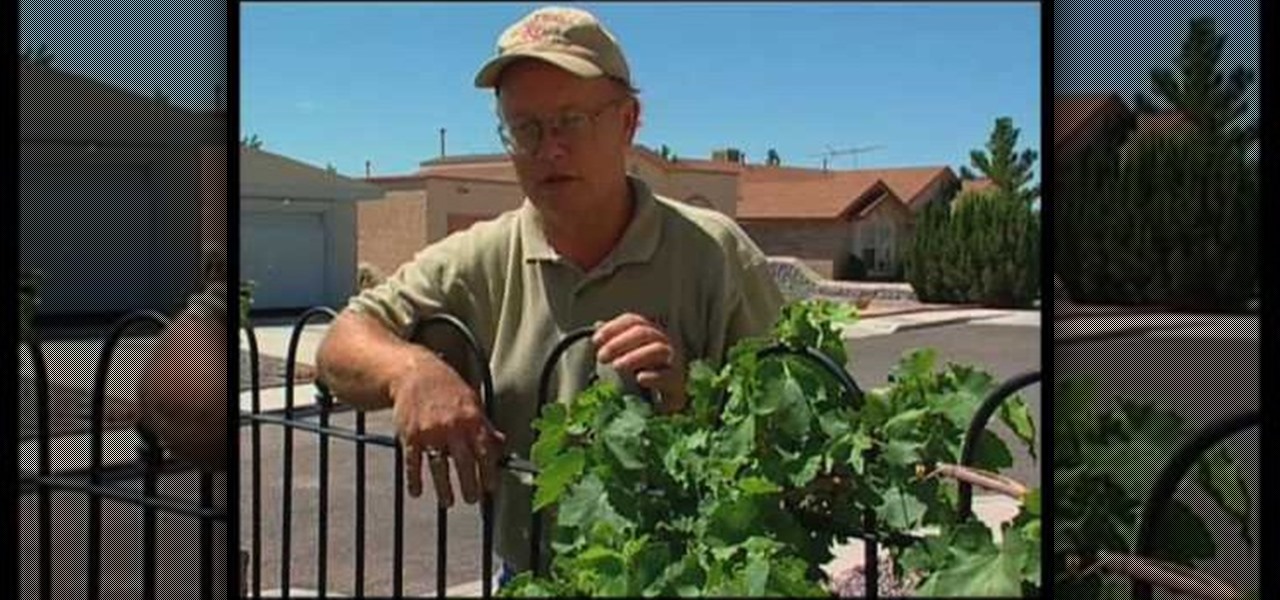
How To: Identify and control garden pests on grapes and roses
This video illustrates the quick and easy method to Identify and control garden pests on grapes and roses . The process is comprised of the following steps:Step 1:Garden pests are quite common in grapes and roses.Step 2: To identify these gardener needs to keep a very sharp eyes on the plants every day. Negligence may lead to disaster of the entire crop.Step 3:Garden pests can be commonly seen on the leaves on inner side or on the shoots of the plant.Step 4:Randomly select the plant and check...
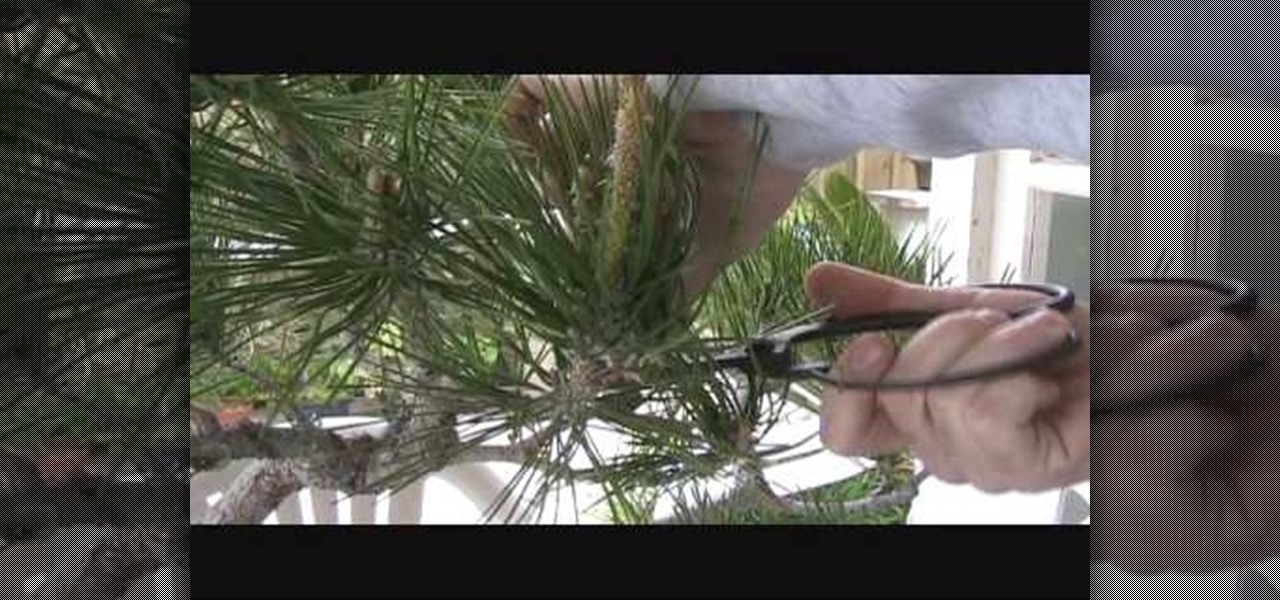
How To: Prune & clean a Japanese black pine bonsai for spring
In this Home & Garden video tutorial you will learn how to prune & clean a Japanese black pine bonsai for spring. First you got to prune off the branches that you don’t want and allow only the branches that you want in order to design the tree. After about a year of pruning off the branches cut off the studs created by the left over branches so that the area is flush with the rest of the trunk. Then cut off any dry stubs around the foliage. Next cut off the foliage that is growing out of the ...

How To: Choose a daylily variety for your garden
There are many different types of daylilies, and this video shows the different varieties and how to care for them. First they show a variety called Double Cutie and explain that you need to take off the wilted blossoms to get more blooms the following year. If the leaves are striped, it means there is an iron deficiency in the soil, and there are products you can get for that. There is a variety of daylily that is almost white, called Tuscawilla Tranquility. There are no daylilies that are p...

How To: Divide and re-plant irises
In this how-to video, you will learn how to divide and re-plant irises in your garden. First, dig out the iris. Clean out the old, dead leaves and take the dirt off. Trim the leaves off as well. Break off the pieces, as these can become a new plant to grow. Several pieces can be broken off, allowing you to grow even more irises. Discard the part that is left over. You can save the pieces for a little while, but it is better to plant them soon. Irises do not require a rich soil to grow, so kee...

How To: Repot a Japanese black pine bonsai
Hi everyone, happy new year. Today we will be repotting a Japanese black pine bonsai tree with Charles M. We will first check the health of the pine tree by checking the fungus cultures. It is a healthy tree if there is a lot of fungus. We will first prune some of the roots to be used in the new soil. We will loosen up some of the roots to be able to repot it. We will make sure not to throw away any fungus cultures to make sure to preserve the tree. Enjoy the video on how to repot a bonsai tree.
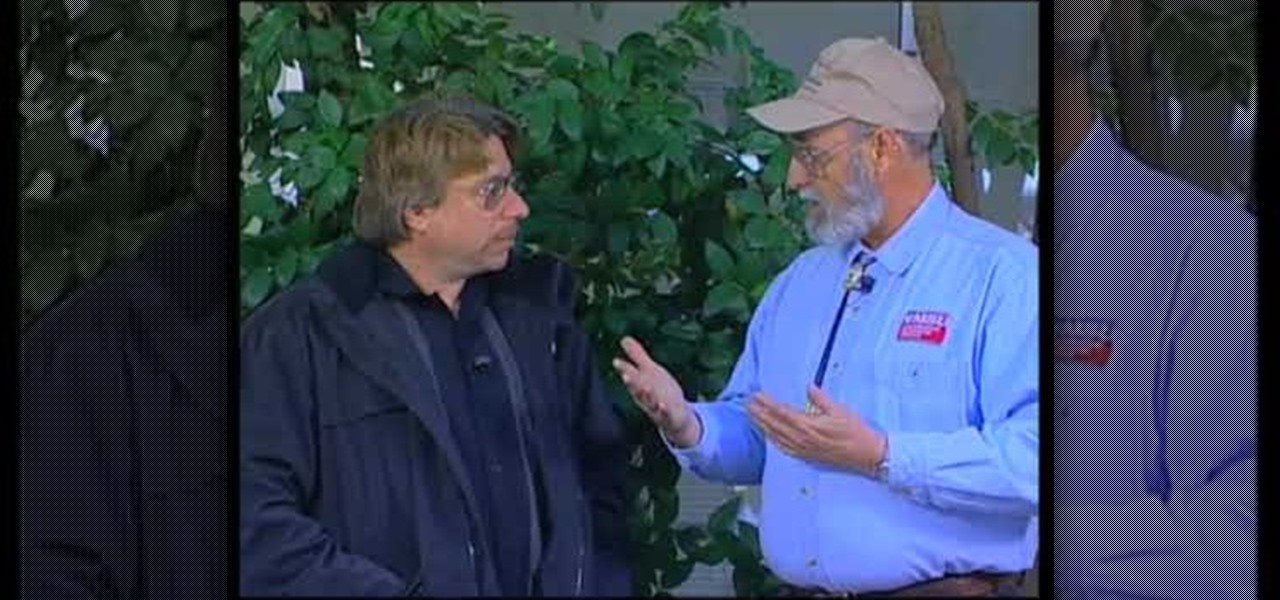
How To: Prune small trees
How to prune small trees

How To: Identify and control problems with bermudagrass
In this how-to video, you will learn how to identify and control problems with Bermuda Grass. If you are worried with allergies, you should check if you are allergic to this particular grass. The seed heads produce the majority of it, but even the pollen produces these allergies. Regarding the water schedule, the grass needs water during the summer. If you have a fine textured soil, you should water about one time a week. If your grass is turning a blue-gray color, it might be lacking water. ...
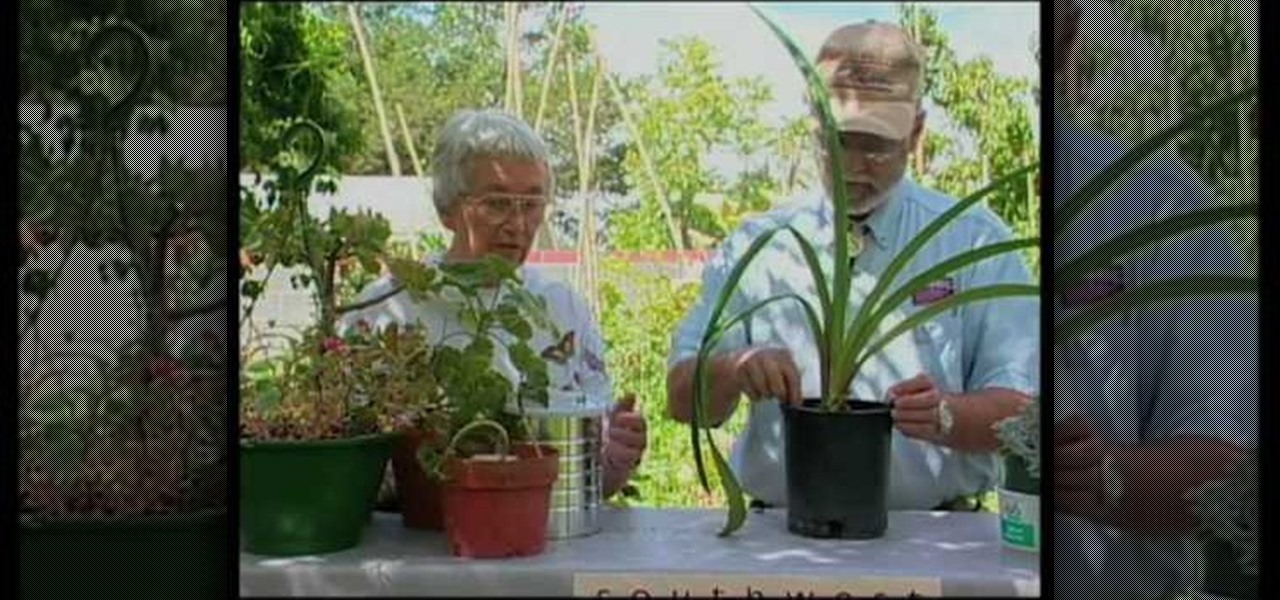
How To: Re-pot house plants
This video shows you how to re-pot your houseplants. When your geraniums have overgrown, cut your clippings. Let the clipping cure: i.e. the wound that you created needs to seal and cure, before planting. Set them aside, in order to allow them to cure. Once that is done, submerge the tip of the fresh clipping in a pot filled with fresh soil. Remember to remove dead leaves.

How To: Fertilize your fall lawn
John White from Southwest Yard and Garden teaches viewers how to fertilize and care for their fall lawn. Fertilization is recommended at 1 pound per month. As you reach September and October, reduce your nitrogen to 1/4 a pound and as October comes around reduce this even further to about half a pound. You will need turf fertilizer and on this package there will be three numbers in the order representing nitrogen, phosphorous and potassium. In late fall you will want to use a fertilizer with ...

How To: Care for venus flytrap, gloxinia and bromeliad
To care for:Venus Flytrap: It is a great project for children, however, there are a few things to remember to look after this plant. Firstly it is best to use cover to protect the plant, as they have a tendency to dry out quickly. Also be careful not to overfeed the plant insects.Gloxinia: Many people buy this beautiful plant in bloom, however, after bloom they throw away the plant as they think they have killed it by over watering. All you do is stop watering it so it lies dormant, and then ...

How To: Prune hybrid-T roses
John White and Rosemary Maddox Master Gardner will teach us how to prune our hybrid t-roses. To begin, you’ll need a set of bypass pruners, long handles loppers for branches or canes, which are bigger than your thumb. You may also need a pruning saw, 10% bleach solution which is 10 parts water + 1 part bleach., an old dog bowl for the bleach, gloves, and a low stool. Begin with the bypass pruners clipping all branches that may be crossing or too close to the main branches that you will keep. ...
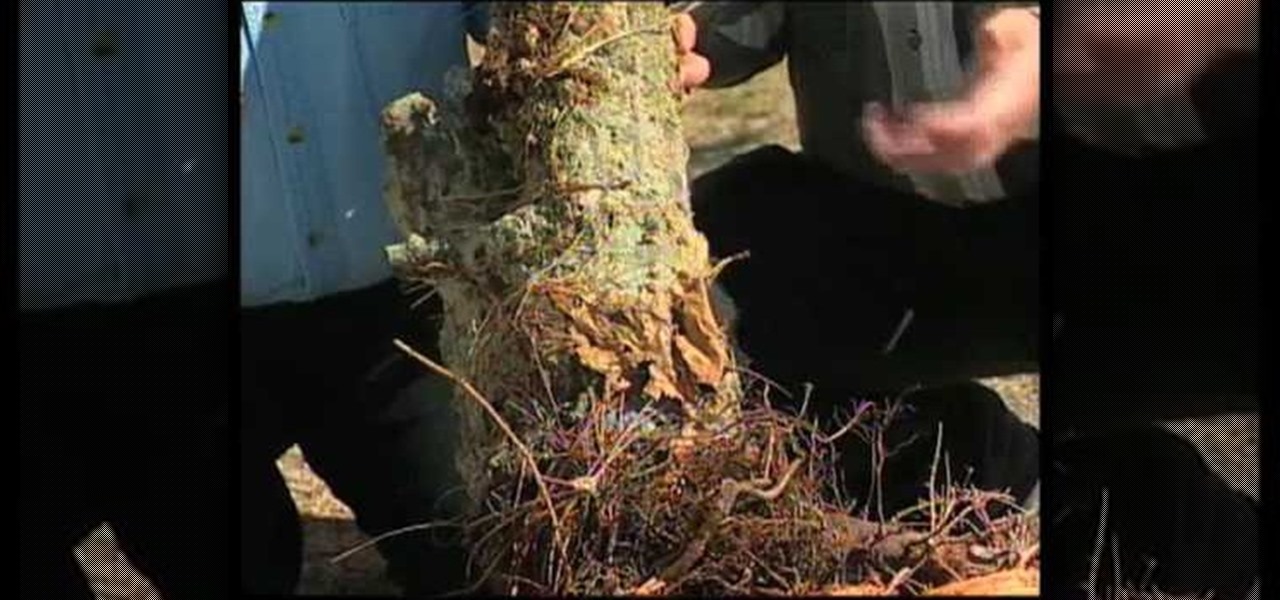
How To: Keep your tree from dying
First of all you have to check the root which has started circling. Then notice that there is a dark portion at the bottom of the trunk. You can prevent this problem by avoiding to plant too deeply and not to leave in the pot for too long. You have to plant it at the right depth. Now check the roots of the bigger tree that has died. You shall notice that the roots have started circling around a part and then they stop the circulation to the top of the tree and then the tree dies because it wa...

How To: Prepare garden soil for planting
Southwest Yard and Garden teaches viewers how to prepare garden soil for planting. You can use compost to work this into your soil. You can make your own compost and you can also buy compost. First, you can use a flat bladed spade or a sharp shooter spade to double dig your garden soil. First, you should dig double deep into the soil and turn the soil to the side. What you want to do is dig a trench. Go back to the beginning of the trench and dig a second depth. You will want to get below the...

How To: Use plastic row covers & wall of water for plants
This video demonstrates how to use plastic row covers and wall of water to start plants early. A lot of gardeners want to start their planting early if the weather is nice. But they may be subject to some frost still yet. How can they protect their plants? First is a demonstration of how to use a spun bond polyester like material. It is breathable, rather than using clear plastic, so the plants don't cook on warmer days. Then the video shows how to use a wall of water to start a few plants ea...

How To: Use recycled paper in compost at home
Southwest Yard and Garden shows viewers how to use recycled paper in compost! In order to compost paper you should first shred up the paper into pieces. Then you need to work in the paper into the soil or sand. You should work the paper into the soil in equal parts. Make sure you mix nitrogen into this composting paper. You need to mix nitrogen into it or it will not decompose and the process will not be fed. So first mix your paper with soil and sprinkle in nitrogen. You also need to water t...
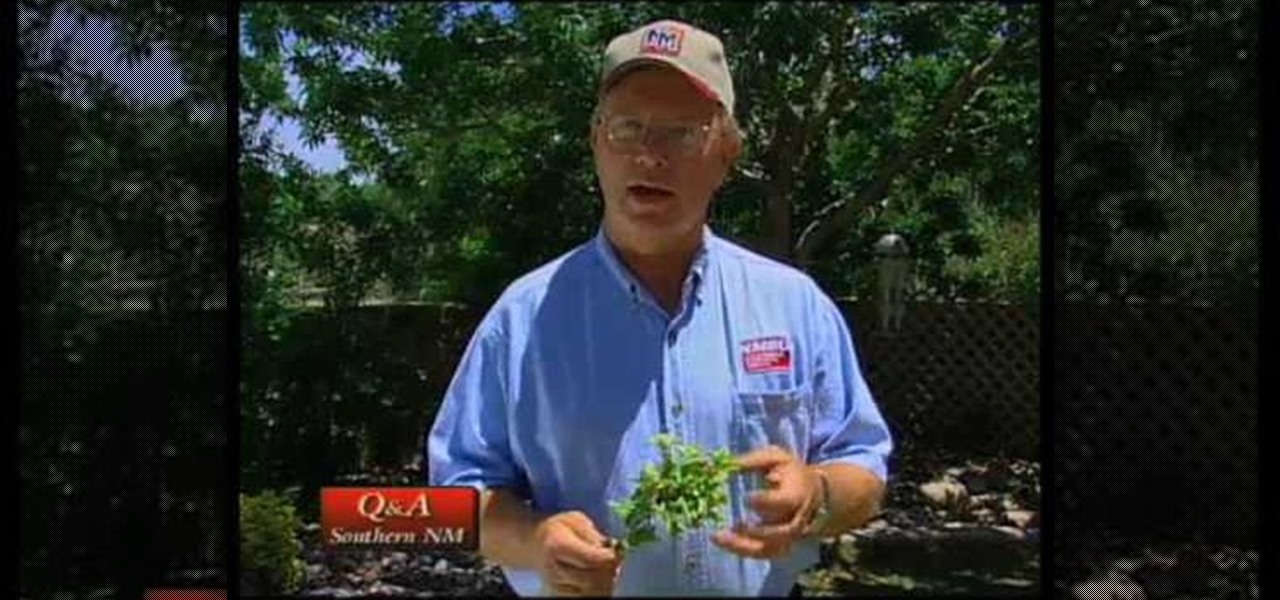
How To: Identify problems with euonymus, chinese holly & pines
In this Home & Garden video tutorial you will learn how to identify problems with euonymus, Chinese holly & pines. Japonica plant is very susceptible to powdery mildew which shows up as white spots on the leaves. It also affects some other plants like roses. This will discolor and deform the leaves. You need to spray with recommended fungicide. If the disease has gone too deep into the plant, you may have to remove some badly affected foliage and then spray. You may also think of replacing th...
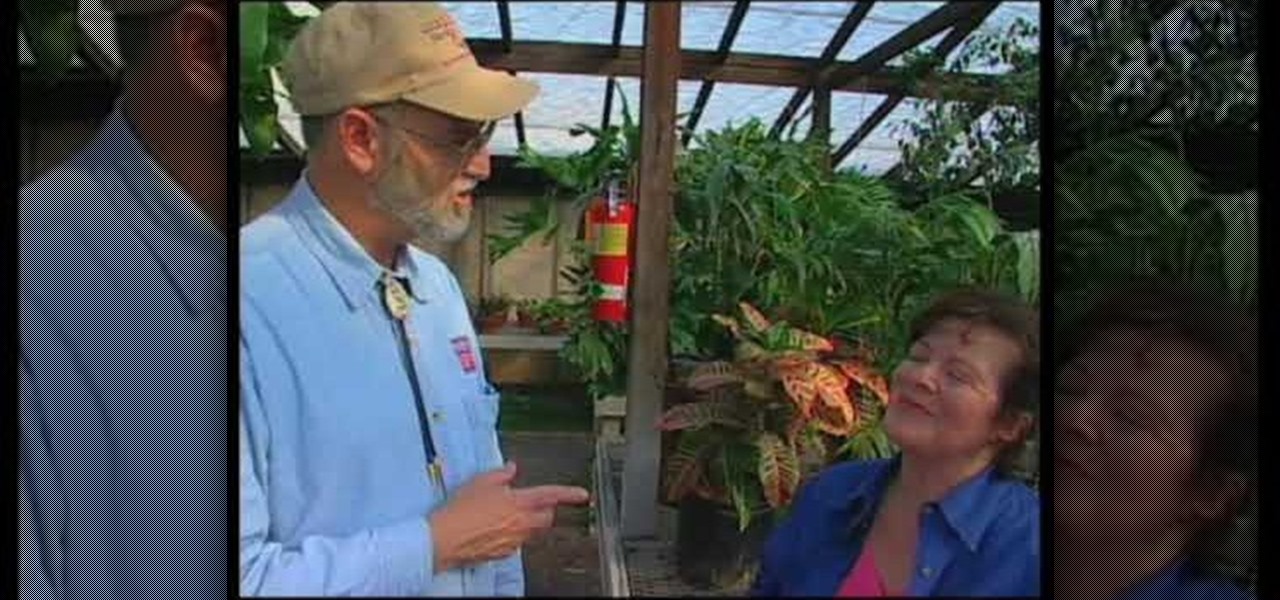
How To: Plant asparagus
Southwest Yard and Garden teaches viewers how to plant asparagus! First, in your garden you need to dig a trench that is about 8 inches deep. You should mix up some compost into this trench. Choose an asparagus that has a fern and make sure you choose a variety that is a male hybrid. These are more tolerant of other problems such as wilt. Simply, plant these 8 inches deep but do not cover them fully. Cover them gradually and cover it as it grows highly. Make sure your roots are laying horizon...
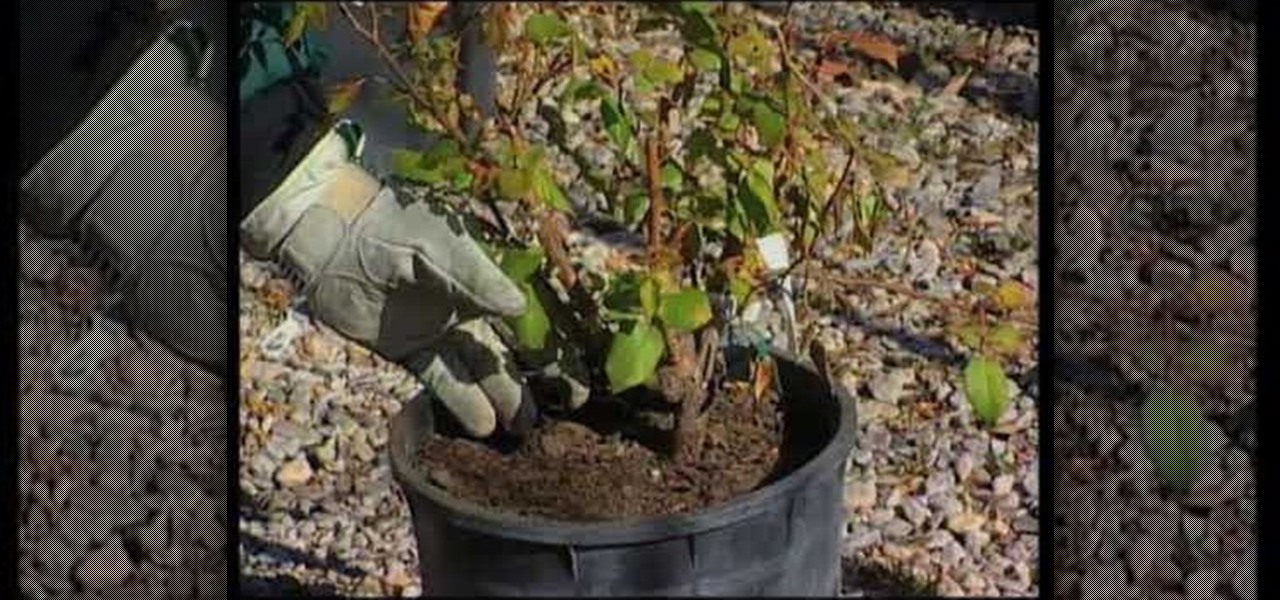
How To: Care for a garden in february during dormant season
John White, a Doña Ana County Extension Agent, highlights a new section on the show - a monthly checklist for the garden. This time, he talks about what to do in your garden in the month of February. The checklist includes planting dormant plants, pruning with a purpose and applying herbicides and pesticides. He shows us various types of dormant plants that can be purchased from nurseries in February for planting such as potted, bare-root or root-balled plants wrapped in burlap. As for prunin...
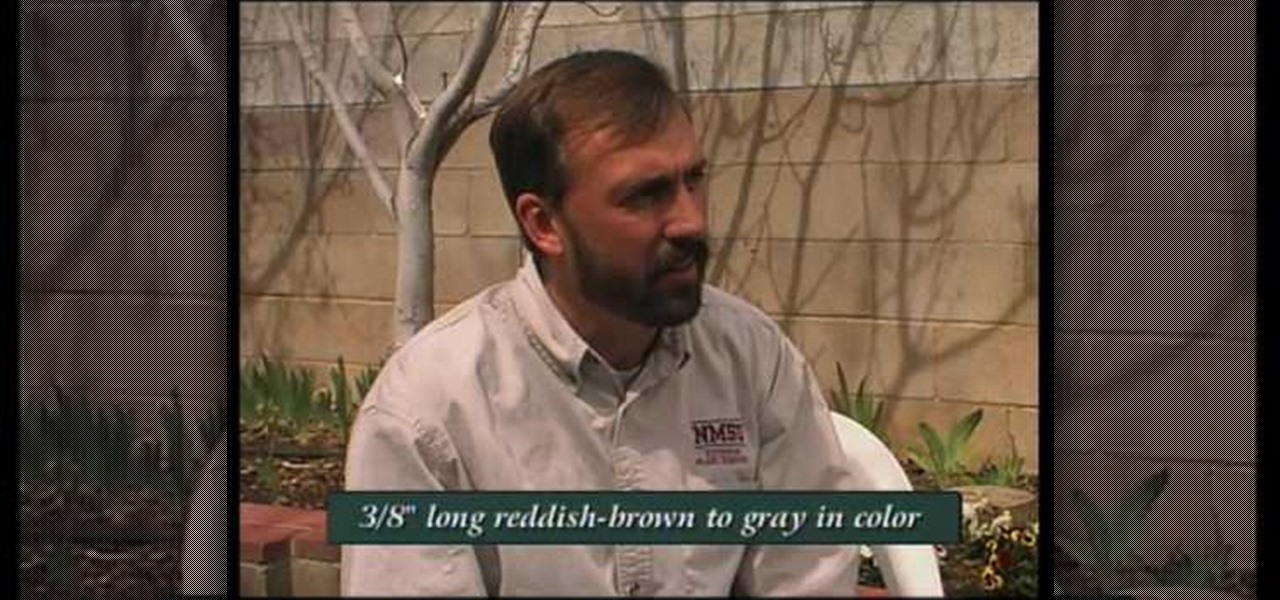
How To: Identify and control the pine tip moth
This is a tutorial for controlling the Pine tip moth. Identifying and controlling the pine tip moth consists of studying the small plants of pine. The attacks on pine trees is caused by Nantucket pine tree moth found along the Rio Grande Valley as far north as Espanola, it has spread to South Arizona and California by importing grafts from Mexico. The moths are 3/8 inch long reddish brown to grey in color. They attack the main stem of the baby plant and the pines instead of growing vertical g...

How To: Pick and care for poinsettias
Learn how to choose and care for poinsettias with Southwest Yard and Garden's John White. You will be taken through the typical height and specifications for poinsettias, as well as what to look for in the leaves and flowers. One of the most important parts of growing poinsettias is keeping to a specific schedule. Measuring the plants is also important as plants that are too tall or too short are undesirable. Remember to frequently water the plants, but be careful not to overwater. Also, keep...
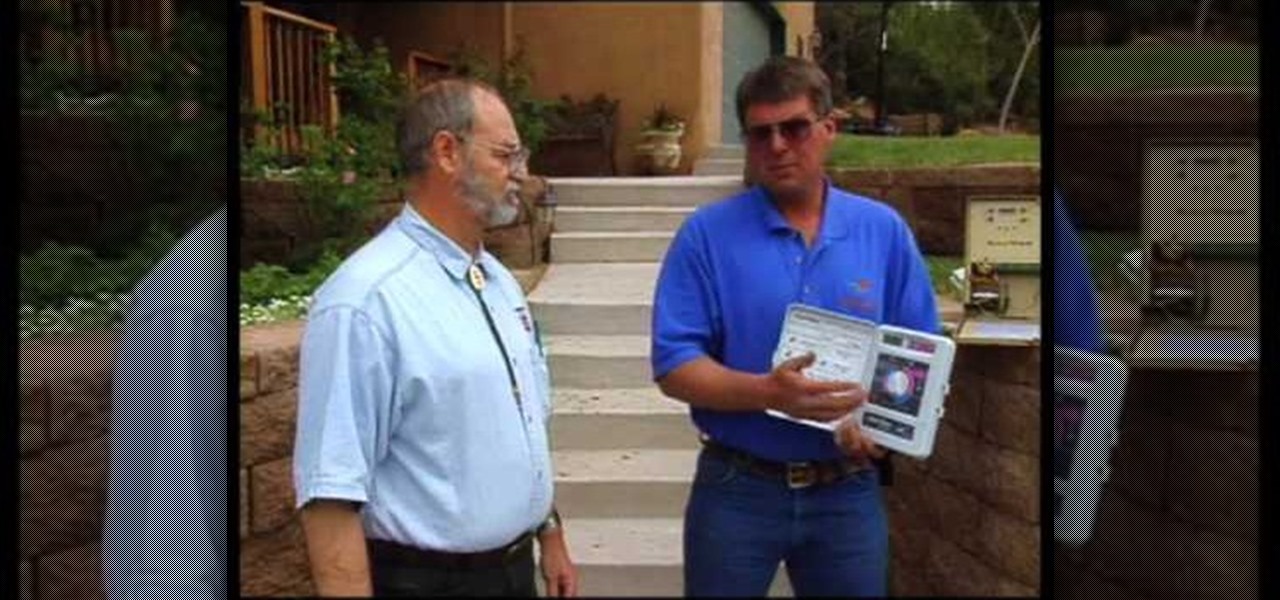
How To: Install a lawn irrigation system
In this how-to video, you will learn how to install a lawn irrigation system. You must have a digital controller with an AV program. This controls the zones at which the water comes on. These can save you a lot on water use. The controller controls the valve which accesses the water. Make sure all your sprinkler heads are all the same. There are different types of heads, each serving for different situations. Backflow preventers are needed as well, as they prevent contaminants from going back...
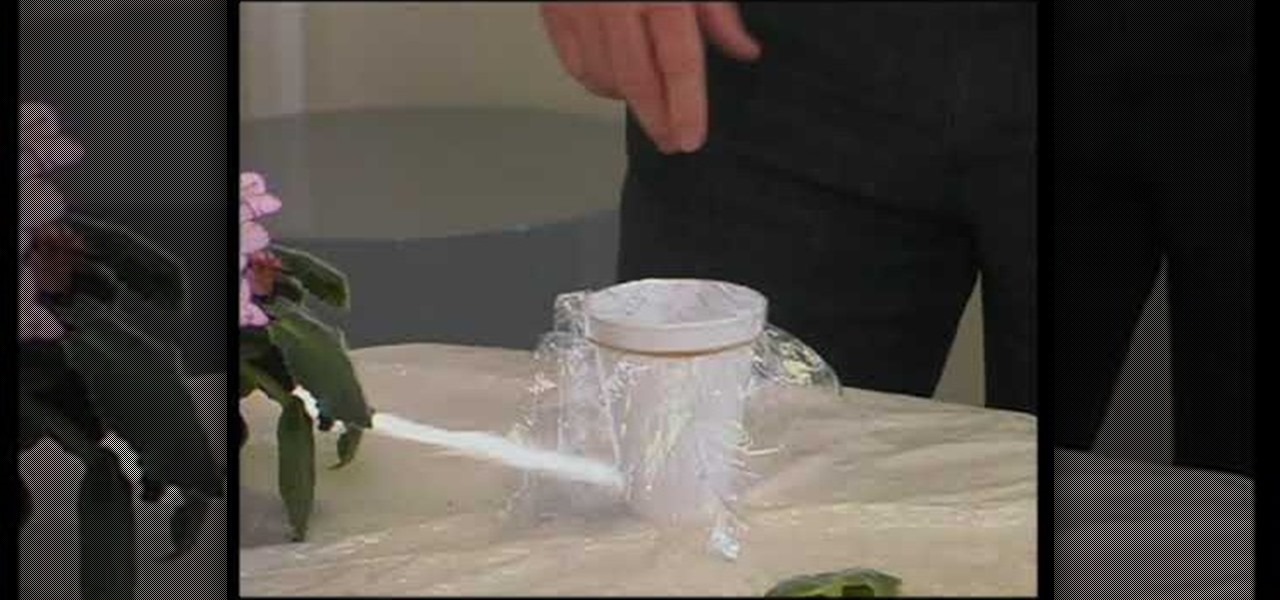
How To: Propagate iceplants and african violets
to transfer ice plants, take a Styrofoam cup with holes in bottom and sides for drainage. fill cup with potting soil. place cuttings of ice plants into pot, about 2-3 cuttings per cup. keep moist. for African violets, snap off an entire leaf including the stem. fill a Styrofoam cup with water. cover with saran wrap with a rubber band around the edge to keep it tight. cover completely with aluminum foil to keep inside of cup dark. place hole in center of plastic/aluminum foil with a pencil. pl...
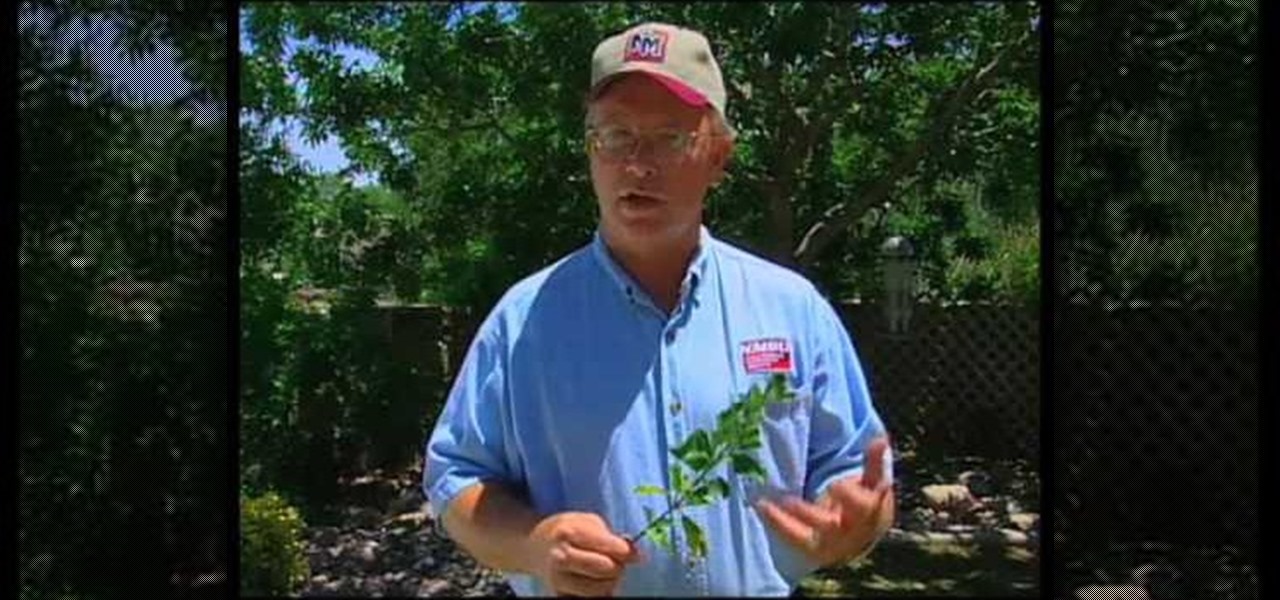
How To: Identify problems with a ground covering juniper
This video illustrate us how to identify problems with ground covering junipers .Here are the following steps .step 1: First of all look through the whole plant and see whether there is any browning or fall of leaf, if so then this may be due to water logging as these plants are good for soil with well seepage and lots of sun.Step 2: Look whether the leafs are free of all the bacterial and fungal infection.Step 3: Look whether there are any spider mites present, if so remove them.Step 4: Look...



